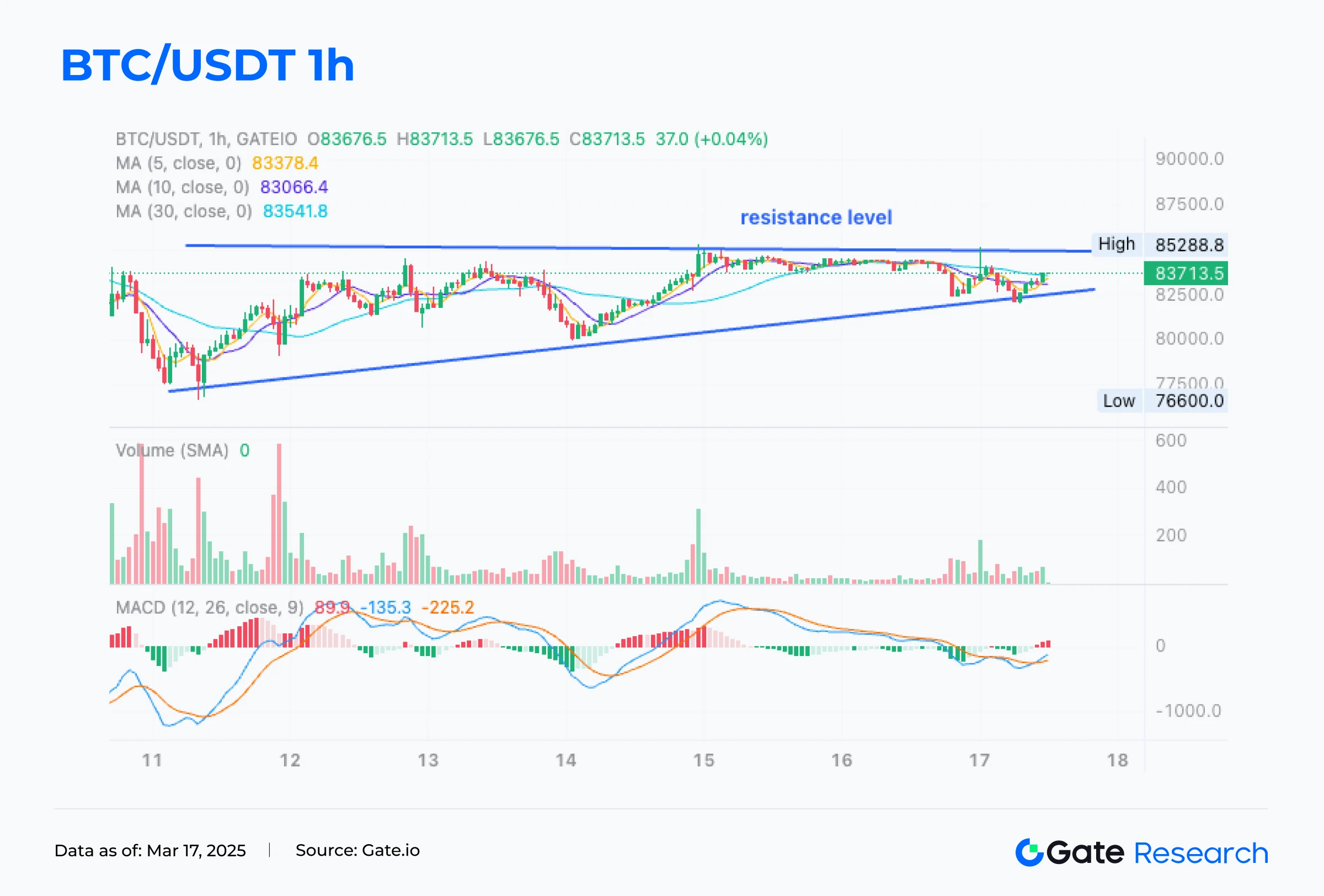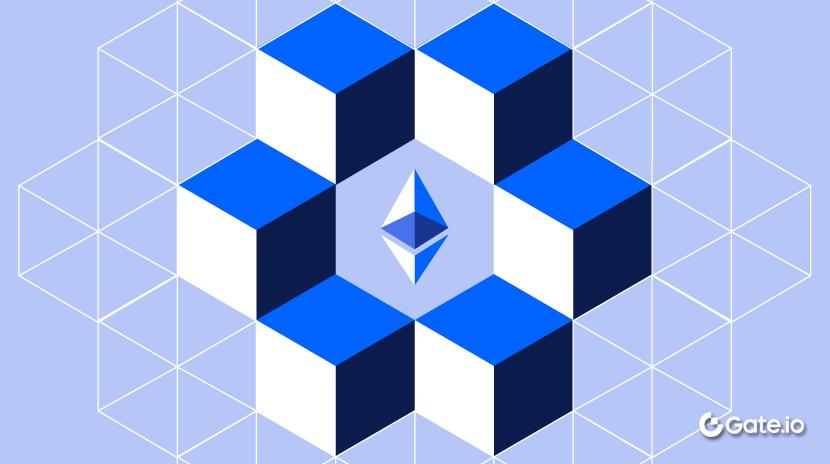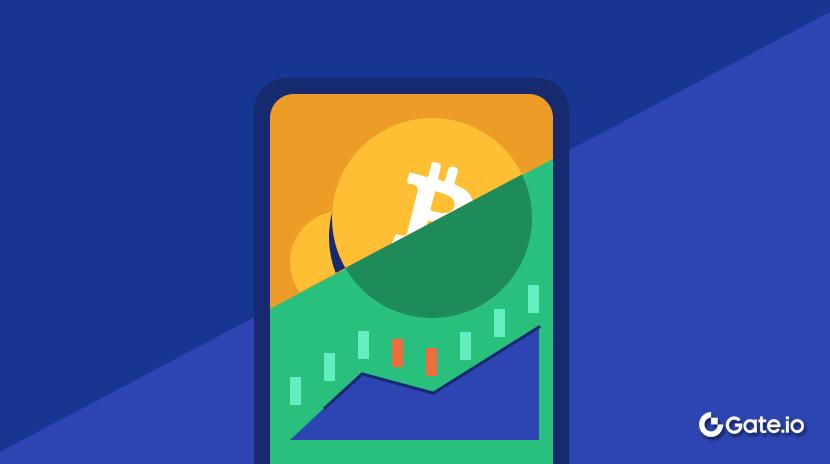Investigación de Gate: Solana domina con el 57% de los ingresos totales de la cadena de bloques en febrero; Argentina implementa nuevas regulaciones para VASP
Resumen
- El precio de Bitcoin cayó un 0.54% a $83,713.5, mientras que el precio de Ethereum cayó un 0.69% a $1,908.56.
- Los ingresos de Solana en febrero representaron el 57% del mercado total de la cadena de bloques.
- La capitalización de mercado de las stablecoins está creciendo, con USDT manteniéndose dominante y USDC expandiéndose dentro del ecosistema de Solana.
- Las tenencias de Bitcoin del grupo de hackers norcoreano Lazarus Group han aumentado hasta convertirse en el tercero más grande a nivel mundial.
- Los votantes estadounidenses generalmente se oponen al plan estratégico de reserva de criptomonedas, con las prioridades fiscales aún centradas en el bienestar público.
- Argentina ha implementado oficialmente nuevas reglas regulatorias para Proveedores de Servicios de Activos Virtuales (VASPs) para fortalecer el cumplimiento y la estabilidad del mercado.
Análisis del mercado
- BTC - El precio de BTC cayó un 0.54% en las últimas 24 horas, actualmente en $83,713.5. BTC se encuentra en una tendencia alcista volátil, encontrando resistencia cerca de $85,200, con varios intentos fallidos de ruptura. El volumen de operaciones sigue siendo relativamente estable. El indicador MACD está operando por encima del eje cero, pero las barras de momentum muestran poco cambio, lo que indica que la fuerza alcista es relativamente estable pero no se ha fortalecido significativamente.

- ETH - El precio de ETH cayó un 0,69% en las últimas 24 horas, actualmente en 1.908,56 dólares. ETH fluctúa dentro de un rango de 1.820-1.950 dólares. A corto plazo, el precio rebotó de USD 1,870 a USD 1,910, rompiendo por encima de la media móvil, mostrando cierto impulso alcista. Sin embargo, el volumen general de operaciones sigue siendo mediocre, lo que sugiere que el precio puede carecer de un fuerte impulso direccional. [2]

- ETF- Según los datos de SoSoValue, el 14 de marzo, los ETFs de Bitcoin spot de EE. UU. vieron una salida neta total de $68.41 millones [3], mientras que los ETFs de Ethereum spot de EE. UU. tuvieron una salida neta total de $35.3 millones. Datos hasta el 17 de marzo, 13:30 PM (UTC+8). [4]
- AltcoinsLos tokens CEX y los Launchpads subieron un 1.4% y un 1.2%, mientras que la mayoría de los otros sectores disminuyeron.
- Índices del mercado de valores de EE. UU.- El 14 de marzo, el S&P 500 subió un 2.13%, el promedio industrial Dow Jones aumentó un 1.65%, y el Nasdaq avanzó un 2.61%. [6]
- Oro al contado- El precio del oro al contado alcanzó los $2,987 por onza, con un aumento diario del 0.11%. Datos hasta el 17 de marzo, 12:00 PM (UTC+8). [7]
- Índice de Miedo y Avaricia- El índice de miedo y avaricia se sitúa en 46, lo que indica que el mercado está en un estado de miedo. [8]
Mejores Intérpretes
Según los datos del mercado de Gate.io[9], según el volumen de negociación y el rendimiento de precios en las últimas 24 horas, las principales criptomonedas con mejor rendimiento son las siguientes:
BNX (BinaryX) - Aumento de un solo día de aproximadamente 33.07%, con una capitalización de mercado circulante de $602 millones.
BinaryX es una plataforma de finanzas descentralizadas (DeFi) basada en Binance Smart Chain (BSC) y Ethereum. Inicialmente enfocada en el comercio de opciones binarias, luego pasó a ser un proyecto GameFi. Su juego principal, CyberDragon, integra juegos con la tecnología de cadena de bloques, lo que permite a los jugadores ganar tokens BNX a través de actividades en el juego.
Recientemente, el precio de BNX (BinaryX) ha aumentado significativamente, impulsado por varios factores, incluida la reposicionamiento de la marca, el auge de la economía de memes y el soporte de intercambio. En primer lugar, BinaryX anunció su cambio de marca aCuatroe introdujo un plan de conversión de tokens 1:1, señalando un cambio de plataforma GameFi a un ecosistema Web3 más amplio, lo cual fue recibido positivamente por el mercado. En segundo lugar, después de la rebranding, BinaryX se integró rápidamente en el ecosistema de BNB Chain y lanzó la plataforma de monedas MemeFour.meme, alineándose con la tendencia actual de la economía de memes y atrayendo flujos de capital sustanciales. Además, el apoyo de las principales plataformas de trading y el plan de actualización del token han aumentado la atención del mercado y han impulsado la confianza de los inversores, lo que ha provocado un aumento de precios. [10]
QANX (QANplatform) - Aumento de un solo día de aproximadamente 23.12%, con una capitalización de mercado circulante de $63.68 millones.
QANplatform es una plataforma de cadena de bloques híbrida resistente a la cuántica de Capa 1, que permite a los desarrolladores y empresas construir contratos inteligentes, aplicaciones descentralizadas y soluciones DeFi utilizando cualquier lenguaje de programación.
Durante el último mes, se han lanzado varios chips cuánticos, incluido el de Amazon’sOcelot y de Microsoft Majorana 1. Estos avances tecnológicos indican que las computadoras cuánticas pueden ser desplegadas prácticamente en los próximos cinco años. QANplatform se destaca por sus características de seguridad integradas resistentes a la computación cuántica. A medida que se acerca la era de la computación cuántica, QANplatform, siendo una de las pocas plataformas de blockchain ya preparadas para amenazas cuánticas, puede experimentar una creciente demanda del mercado y un aumento del interés de los inversores, impulsando el precio del token QANX al alza. [11]
Aspectos destacados de datos
Los ingresos de febrero de Solana representan el 57% de los ingresos de la Cadena de bloques
En febrero de 2025, los ingresos de Solana representaron el 57% de los ingresos totales de la cadena de bloques, superando el 50% en tres de los últimos cuatro meses. Solana sigue siendo una de las cadenas de bloques públicas más rentables. Sin embargo, su impulso de crecimiento se ha debilitado en comparación con el período pico del comercio de Memes.
Aunque Solana mantuvo una alta cuota de ingresos a principios de 2025, impulsada por el aumento del volumen de transacciones, un ecosistema DeFi maduro y la economía de Meme, el entusiasmo por el trading de Memes ha fluctuado.Pump.funObservé una disminución del 38% en los ingresos en febrero en comparación con enero, lo que puede indicar un enfriamiento en el comercio de memecoins. Si el sentimiento del mercado se debilita, la tasa de crecimiento de los ingresos de Solana podría verse afectada. [13]
Además, Solana enfrenta presión competitiva de cadenas de bloques rivales como Ethereum L2s, Aptos y Sui. Su capacidad para soportar el trading de alta frecuencia a través de la estabilidad de la red sigue siendo un factor clave que influye en el crecimiento. En el futuro, los ingresos sostenidos de Solana dependerán de una mayor expansión de su ecosistema DeFi, el desarrollo continuo de su comunidad de desarrolladores y optimizaciones de infraestructura para contrarrestar el impacto potencial de la disminución de la actividad de trading de Meme.

El valor de mercado de las stablecoins crece, USDT sigue siendo dominante, USDC se expande en el ecosistema de Solana
Según los datos de DeFiLlama, hasta el 17 de marzo, la capitalización total del mercado de stablecoins ha alcanzado $229.132 mil millones, lo que representa un aumento de $1.962 mil millones con respecto a la semana anterior, reflejando un crecimiento semanal del 0.86% e indicando una mayor entrada de capital en el mercado. USDT continúa manteniendo una participación de mercado del 62%, manteniendo su posición como la stablecoin más grande del mundo, mientras que las participaciones de mercado de USDC, DAI y otras stablecoins han permanecido relativamente sin cambios, lo que sugiere una estructura de mercado estable.
Además, USDC ha experimentado un crecimiento significativo dentro del ecosistema de Solana. Los datos de OnchainLens muestran que hasta 2025, Circle ha emitido más de 10 mil millones de USDC en la cadena de bloques de Solana, lo que representa el 25% del mercado de monedas estables. Este crecimiento refleja la creciente adopción de USDC en el ecosistema DeFi y aplicaciones de pago de Solana, fortaleciendo potencialmente su competitividad en el mercado.
A corto plazo, el continuo crecimiento de la capitalización de mercado de stablecoins puede indicar un impulso de mercado más fuerte, atrayendo más capital a las actividades comerciales. A largo plazo, el mercado de stablecoins sigue influenciado por las políticas regulatorias, el surgimiento de stablecoins emergentes y el desarrollo de las monedas digitales de los bancos centrales (CBDC). Mientras que USDT y USDC siguen dominando, el rápido crecimiento de USDC en el ecosistema de Solana podría remodelar aún más el panorama competitivo del mercado de stablecoins, posicionando potencialmente a Circle como un jugador más significativo en la industria global de stablecoins.

Los titulares a corto plazo de Bitcoin incurren en $100 millones en pérdidas, el mercado enfrenta presión a la baja
La reciente caída en el precio del Bitcoin ha resultado en pérdidas significativas para los tenedores a corto plazo (STH). Según los datos de CryptoQuant, los inversores que compraron BTC en los últimos 1 a 3 meses han sufrido el golpe más duro, con muchos vendiendo en pánico en lugar de mantener sus posiciones. Los datos muestran que este grupo ha perdido colectivamente aproximadamente $100 millones, lo que indica una presión financiera sustancial sobre los inversores a corto plazo. Además, la capitalización de mercado (MC) que cae por debajo de la capitalización realizada (RC) sugiere que la base de costos de los tenedores a corto plazo es mayor que el precio de mercado actual, lo que los lleva a vender con pérdidas, exacerbando aún más la presión de venta. Algunos especuladores se han visto obligados a salir debido a la retracción del mercado, aumentando la liquidez del mercado y ejerciendo una presión adicional a la baja sobre los precios.
Desde una perspectiva de tendencia del mercado, la presión de venta de los titulares a corto plazo podría plantear riesgos a la baja a corto plazo. Si el sentimiento del mercado no se recupera, el precio de Bitcoin podría permanecer bajo presión o incluso experimentar correcciones adicionales. Sin embargo, cabe destacar que los titulares a largo plazo (LTH) siguen siendo relativamente estables, lo que indica un sólido soporte subyacente en el mercado. Si la presión de venta disminuye gradualmente, el mercado podría volver a una tendencia alcista después de un período de volatilidad a corto plazo. Por lo tanto, los inversores deben monitorear de cerca los cambios en la liquidez general y el comportamiento de los titulares a largo plazo para evaluar las futuras tendencias del mercado.
Análisis de Spotlight
Los votantes estadounidenses muestran una fuerte oposición al plan estratégico de reserva de criptomonedas, las prioridades fiscales siguen centradas en el bienestar público
Una encuesta reciente muestra que el público estadounidense se opone en gran medida al plan de la administración Trump de establecer una reserva estratégica de criptomonedas, con un 51% en contra y solo un 34% a favor. Los votantes republicanos están divididos en la cuestión (41% apoya vs. 40% se opone), mientras que los votantes demócratas se oponen firmemente (59% vs. 29%). Además, el desarrollo de criptomonedas y blockchain se considera la prioridad más baja en el gasto fiscal federal, con solo un 10% de los encuestados apoyando un aumento de fondos, mientras que el 45% cree que el presupuesto debería reducirse. La Seguridad Social, Medicare y la infraestructura de transporte siguen siendo las principales preocupaciones fiscales para el público.
Estos resultados resaltan una clara división en la sociedad estadounidense con respecto a las políticas de criptomonedas, siendo las criptomonedas generalmente consideradas como un tema secundario. Mientras que las generaciones más jóvenes tienden a tener una postura más abierta hacia el desarrollo de criptomonedas, el gobierno aún necesitará construir un consenso social más amplio sobre las prioridades fiscales, marcos regulatorios y beneficios económicos para avanzar en iniciativas relacionadas y aliviar las preocupaciones públicas.
El grupo de hackers norcoreano Lazarus ahora posee las terceras reservas de Bitcoin más grandes a nivel mundial
Los datos indican que después de una serie de incidentes de seguridad en febrero, el grupo de hackers norcoreano Grupo Lazarusha comenzado a convertir porciones de activos robados en Bitcoin (BTC). Hasta el 17 de marzo, han acumulado 13,518 BTC, con un valor aproximado de $1.14 mil millones. Esto sitúa a Corea del Norte por delante de El Salvador (6,117 BTC) y Bután (10,635 BTC) en posesión de Bitcoin, convirtiéndola en la tercera entidad gubernamental con más Bitcoin, solo por detrás de Estados Unidos (198,109 BTC) y Reino Unido (61,245 BTC).
Esta tendencia subraya la creciente dependencia de Corea del Norte de los ciberataques para adquirir activos de criptomoneda, utilizando Bitcoin como una herramienta financiera para evadir sanciones internacionales. Con el paso de los años, Grupo Lazarusha atacado con frecuencia a intercambios de criptomonedas, protocolos DeFi y puentes entre cadenas, empleando técnicas complejas de mezcla en cadena para oscurecer los flujos de fondos. A medida que sus tenencias de Bitcoin continúan creciendo, Corea del Norte podría intensificar las actividades comerciales ilícitas en mercados negros y canales de venta libre (OTC) para blanquear activos. Al mismo tiempo, esta situación expone brechas significativas en la regulación global de criptomonedas, planteando preocupaciones urgentes sobre cómo prevenir que grupos de hackers respaldados por el estado aprovechen la tecnología de cadena de bloques para actividades financieras ilícitas. [17]
Argentina Implementa Oficialmente el Marco Regulatorio VASP para Fortalecer el Cumplimiento y la Estabilidad del Mercado
La Comisión Nacional de Valores de Argentina (CNV) ha aprobado oficialmente la Resolución General Nº 1058, estableciendo el marco regulatorio final para los Proveedores de Servicios de Activos Virtuales (VASP). Las nuevas regulaciones abarcan múltiples aspectos, incluidos los requisitos de registro, ciberseguridad, custodia de activos, medidas contra el lavado de dinero y obligaciones de divulgación de riesgos. El objetivo es lograr un equilibrio entre la regulación y la innovación, evitando costos excesivos de cumplimiento y al mismo tiempo mejorando la transparencia del mercado y la protección de los inversores.
Bajo las nuevas reglas, todos los VASPs deben completar el registro formal y cumplir con auditorías del sistema anuales y obligaciones de cumplimiento. Las entidades no conformes pueden enfrentar la suspensión o revocación del registro por parte de la CNV, y en casos graves, los VASPs no registrados podrían ser cerrados bajo órdenes judiciales.
La implementación de las nuevas regulaciones de Argentina marca un paso significativo hacia la legalización y estandarización del mercado cripto latinoamericano. Si bien algunos VASPs pueden salir o ajustar sus operaciones a corto plazo, se espera que una mayor claridad regulatoria atraiga más capital cumplidor, inversores institucionales y mejore la confianza general en el mercado a largo plazo. Si el gobierno argentino logra equilibrar con éxito la regulación y la innovación, el país tiene el potencial de convertirse en un actor clave en la industria cripto de América Latina.
Noticias de financiamiento
Según RootData, en las últimas 72 horas, cuatro proyectos han anunciado públicamente rondas de financiación, con un monto total de financiación de aproximadamente $47 millones. La ronda de financiación única más alta alcanzó los $40 millones, abarcando sectores como pagos y juegos. A continuación se detallan los dos proyectos financiados principales: [19]
RedotPay - RedotPay ha completado una ronda de financiación de la Serie A de $40 millones, con la participación de Lightspeed Venture, Sequoia China y otros. Los fondos se utilizarán para actualizaciones tecnológicas para mejorar las experiencias de pago y para la expansión del mercado para atraer a más comerciantes y usuarios, impulsando la adopción global de pagos con criptomonedas.
RedotPay es una plataforma de pagos de criptomonedas que tiene como objetivo crear un ecosistema de pagos sin fronteras al conectar de forma transparente transacciones de dinero fiduciario y cripto. Con la creciente adopción de las criptomonedas, la demanda de soluciones de pagos cripto seguras y convenientes está aumentando. Al integrarse con los sistemas financieros tradicionales, RedotPay ofrece métodos de pago conformes para activos cripto, reduciendo la barrera de entrada para los usuarios. A pesar de las incertidumbres regulatorias y las presiones competitivas, esta exitosa ronda de financiación proporciona a la empresa los recursos para impulsar la innovación tecnológica y la expansión global, aumentando potencialmente su cuota de mercado en la industria de pagos cripto.
PlaysOutPlaysOut ha completado una ronda de financiación inicial de $7 millones, con inversores que incluyen OKX Ventures, Kenetic Capital y otros. Los fondos se destinarán al desarrollo tecnológico para mejorar las experiencias de juego.
PlaysOut es una plataforma de mini-juegos compatible con varios motores que ofrece una interfaz similar a Steam, permitiendo que las superaplicaciones integren una gran cantidad de minijuegos de forma transparente. Con el auge de los juegos Web3, hay una demanda creciente de experiencias de juego descentralizadas y de propiedad de activos en cadena. PlaysOut conecta la tecnología de cadena de bloques con mecánicas de juego tradicionales, haciendo que los juegos Web3 sean más accesibles para los jugadores. Aunque persisten desafíos en la educación de los usuarios, la calidad de los juegos y la competencia en el mercado, este éxito de financiamiento brinda un apoyo crucial para la innovación y la expansión global, posicionando potencialmente a PlaysOut como un actor clave en la industria de los juegos de cadenas de bloques.
Oportunidad de Airdrop
Giza
Giza es un protocolo de Finanzas de Agente Autónomo Descentralizado (AAF) que aprovecha la tecnología de agentes de IA para optimizar las estrategias de trading e inversión en DeFi. Su marco central, ARMA (Agentes de Gestión de Riesgos Autónomos), está diseñado para proporcionar soluciones eficientes de gestión financiera inteligente, permitiendo a los usuarios automatizar operaciones complejas de DeFi y mejorar la eficiencia en la gestión de capital.
Actualmente, Giza está ejecutando el “Megaphone x Giza Points”programa de airdrop para fomentar la participación de los usuarios y la contribución a su ecosistema de finanzas autónomas. Los usuarios pueden ganar Puntos Gizaal utilizar, probar y optimizar agentes financieros impulsados por IA basados en ARMA, que luego pueden intercambiar por futuras recompensas de tokens. Este mecanismo no solo acelera el crecimiento del ecosistema de Giza, sino que también proporciona incentivos adicionales para los usuarios, promoviendo la adopción y madurez de la tecnología financiera de agentes autónomos.
Cómo participar:
- Visita el sitio web oficial de Giza y conecta tu billetera. [21]
- Complete tasks such as social interactions and setting up an ARMA SMART ACCOUNT.
Nota:
El programa de airdrop y los métodos de participación pueden actualizarse en cualquier momento. Se recomienda a los usuarios seguir los canales oficiales de Giza para obtener la información más reciente. Además, los participantes deben tener precaución, evaluar riesgos y realizar una investigación exhaustiva antes de unirse. Gate.io no garantiza la distribución futura de recompensas de airdrop.
Referencias:
- Gate.io, https://www.gate.io/trade/BTC_USDT
- Gate.io, https://www.gate.io/trade/ETH_USDT
- SoSoValue, https://sosovalue.xyz/assets/etf/us-btc-spot
- SoSoValue, https://sosovalue.xyz/assets/etf/us-eth-spot
- CoinGecko, https://www.coingecko.com/es/categories
- Invertir, https://investing.com/indices/usa-indices
- Inversión, https://investing.com/currencies/xau-usd
- Gate.io, https://www.Gate.io/bigdata
- Gate.io, https://www.gate.io/price
- X, https://x.com/binary_x/status/1893927616861876319
- X, https://x.com/QANplatform/status/1896934122909523987
- X, https://x.com/arcdotfun/status/1898116361869836410
- X, https://x.com/Cointelegraph/status/1900556572884955617/photo/1
- DefiLlama, https://defillama.com/stablecoins
- CryptoQuant, https://cryptoquant.com/insights/quicktake/67d2aadda9545929eccbe041-Short-Term-Bitcoin-Holders-Exit-with-100B-Loss-Analyzing-the-Impact-of-the-1-3-M
- Datos para el progreso, https://www.dataforprogress.org/blog/2025/3/14/a-majority-of-voters-oppose-a-crypto-strategic-reserve
- ARKHAM, https://intel.arkm.com/explorer/entity/lazarus-group
- Argentina.gob.ar, https://www.argentina.gob.ar/noticias/regulacion-de-los-proveedores-de-servicios-de-activos-virtuales-psav
- Rootdata, https://www.rootdata.com/Fundraising
- X, https://x.com/gizatechxyz/status/1899089183328621045
- Gizatech, https://metrics.gizatech.xyz/
Investigación de Gate
Gate Research es una plataforma integral de investigación de la cadena de bloques y criptomonedas, que proporciona a los lectores contenido detallado, incluido análisis técnico, ideas candentes, revisiones de mercado, investigación de la industria, pronósticos de tendencias y análisis de políticas macroeconómicas. \
Haz clic en el Enlacepara aprender más
Descargo de responsabilidad
Invertir en el mercado de criptomonedas implica un alto riesgo, y se recomienda que los usuarios realicen investigaciones independientes y comprendan completamente la naturaleza de los activos y productos que están comprando antes de tomar cualquier decisión de inversión.Gate.iono se hace responsable de las pérdidas o daños causados por tales decisiones de inversión.
Artículos relacionados

¿Cómo hacer su propia investigación (DYOR)?

¿Cómo apostar ETH?

Las 10 principales plataformas de comercio de monedas MEME

¿Qué es el análisis fundamental?

¿Qué es HyperGPT? Todo lo que necesitas saber sobre HGPT
